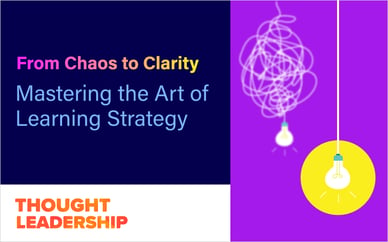
When you want to create the best eLearning content possible, where do you turn?
If you’re new to eLearning, you might be looking for a little help choosing an authoring tool.
Lucky for you, we recently released an eBook all about how to select the right eLearning authoring tool!
The eBook covers 6 different questions to ask as you’re researching eLearning tools.
In it, you’ll discover tips regarding:
- Templates and Assets
- Interactions and Assessments
- Collaborating With Others
- Inclusive and Accessible Design
- Responsive Design
- Features That Ensure the Best Authoring Experience
Here’s a sneak peek about finding an eLearning authoring tool that includes a wide selection of quality templates and stock assets.
Rapid eLearning Development
The term “rapid authoring” refers to eLearning development using authoring tools and pre-built resources like templates to quickly produce learning content—as opposed to programming interactions by hand and using different coding and programming languages. Nobody has time for that!
Templates can range from a single content layout to a more complex interaction to a set of matching layouts with the same overall design scheme. Depending on the project and the deadline, a good template can get you to the finish line in record time.
What should you look for in a template?
- Built-in navigation
- Designs that follow the Web Content Accessibility Guidelines (WCAG)
- Built-in xAPI statements
- Included instructions to help you customize the template
- Source files (these are key for being able to truly make a template your own)
Authoring Tools That Include Templates
Plenty of tools, including Lectora®, Articulate® Rise®/Storyline® 360, Adobe® Captivate®, Gomo®, Elucidat®, and DominKnow® One, offer templates but some look and work better than others. Gomo, Elucidat, and iSpring are good choices for basic, rapid authoring but they have limited customization options and a smaller selection of templates.
Lectora, Storyline, and Captivate offer the most template and stock asset options. Lectora offers in-app access to the eLearning Brothers AssetLibrary. Storyline 360 comes with access to their Content Library, but developers using Storyline 3 (the desktop version), do not have access to that. Adobe Captivate includes an asset store with templates and stock images.
Now, we might be a little biased, but we think our eLearning Brothers AssetLibrary is pretty great. And here’s what our customers think:
“So many valuable images, characters, and videos!”
– User in Virginia
“I love, love, love the cutout people, the After Effects templates, and the audio clips!”
– User in California
“Allows for rapid turn-around with finding/customizing content to match my needs.”
– User in Michigan
“I find the cutout people to be invaluable when creating eLearning scenarios.”
– User in Minnesota
Making the Most of Included Templates
Templates are a great starting point, but you don’t want your courses to look like every other eLearning course out there, right? At the very least, you’ll probably want to add your company’s logo and maybe change the colors to match.
This is where source files come in. Say you love everything about the design of the template—the rounded corners, the headline font, the background graphics—but you need the color to match your company’s branding. If you have the source files to edit, you can go in and select each object and change the color.
Pasting in your content and then making small tweaks to course templates here and there allows you to create a custom-looking course in much less time.
Template Tip: To create a cohesive course, you want a variety of content layouts—like title slides, 50/50 layouts, rule of thirds layouts, bulleted text slides, etc.— and interactions in the same unified design theme.
Developers love the eLearning Brothers Course Starter templates for that very reason.
Each Course Starter is a pack of different layouts, interactions, and a pre-built quiz all using the same design. You get the ability to mix and match the layouts and interaction types that work for your content and learning objectives, plus the comfort of knowing all the pages look unified.
Did you know? Course Starters are included for FREE within Lectora, and are also available for other tools. We can help you get all set up.
The last thing to consider when it comes to templates and assets is how good do they look?
All eLearning templates are NOT created equal. Be sure to browse through any template library you’re considering and make sure there’s a good variety of styles and designs, and that they look professional! Ask yourself if you would want to present to your CEO a course built using these templates.
We talk more about how to use templates and stock assets to create learning that rocks in our free eBook. Download How to Select the Right Authoring Tool now to read all about rapid authoring with templates and assets and the other key considerations of choosing an awesome eLearning authoring tool.








